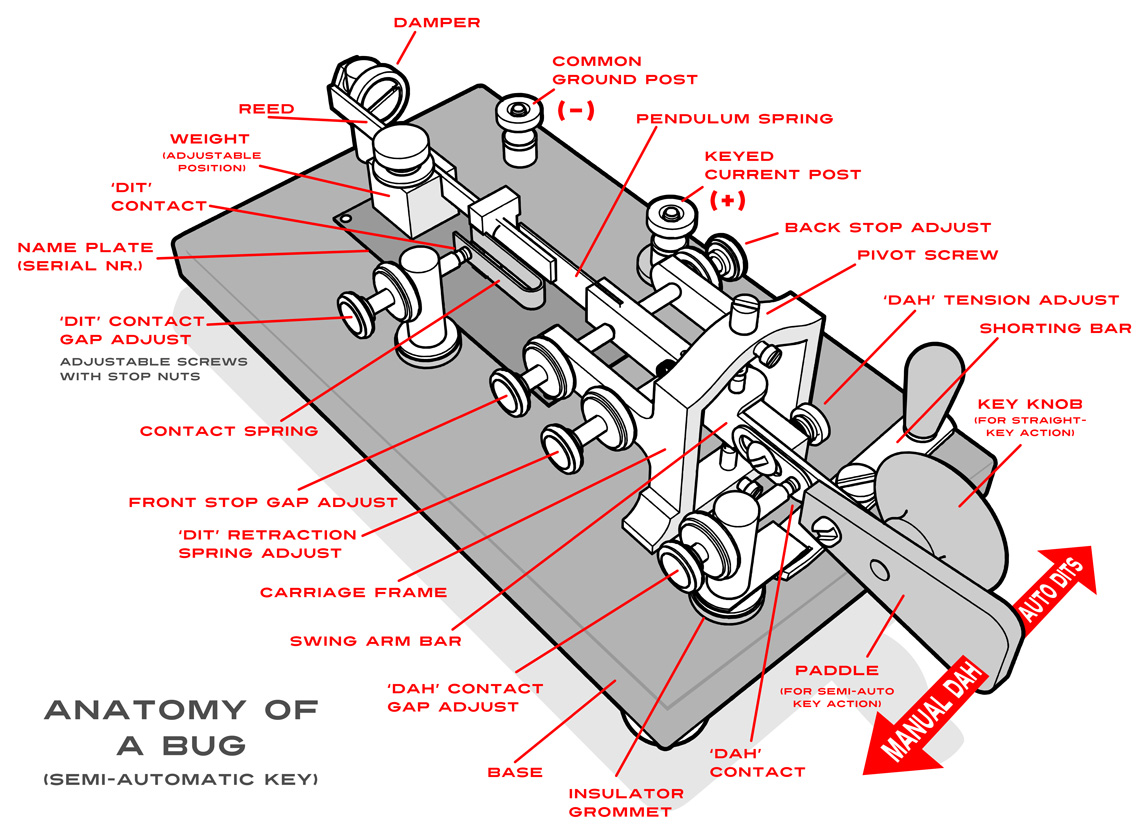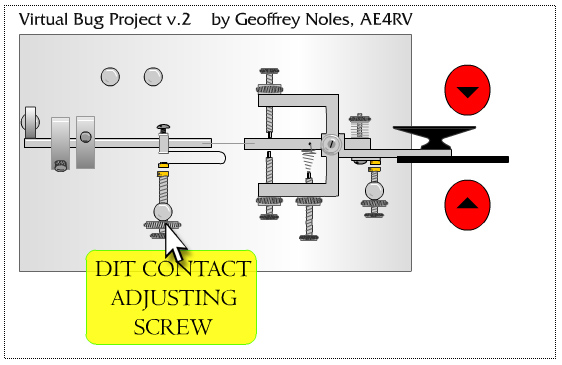...And another reason why I'm loving this new PDF-writer feature more and more!

I had to write a short article for our local ham club newsletter:
http://k4tlh.net/tars-newsletter/
So last night I came up with an idea to break down the anatomy of one of the type of Morse code (CW) key I use which is called a "Bug" by Amateur radio operators.
This is a WWII "J-36" "Bug" (Vibroplex type) key manufactured by J.H. Bunnell in 1942. The base is a heavy piece of solid cast iron, and the rest is nickel coated brass.
The swing arm is moved one way to act as a way to make manually sent dashes "dah's" and moving the arm the other way causes a pendulum to reverberated a spring-loaded contact to produce exact dots "dit's".
The weight on the reed determines the frequency and will give you about 150 dits if needed with the default configuration yielding dots at about 40 word-per-minute speeds.
I have an added weight called a "Bug Tamer" which brings it down to 18 wpm.
This type of key was mostly perfected and mass-marketed by a company called Vibroplex starting in 1904 and is still in business today, though the concept goes back to the old telegraph days in the 1800's.
Go to this site to see a nifty Flash animation of how this key works:::
http://www.ae4rv.com/tn/education/bug.htm

Armed with only a small engineer's ruler, I transposed the measurements into a MoI model, outputted it to a PDF, then used Corel to do the rest.
Though I could have just used the PDF result, I tend to develop certain niches with styling, and after spending two decades of hand-drawing, scanning and tracing to vector - I'm partial to the results.
Nothing too noteworthy, but a very basic result that did the job when needed.